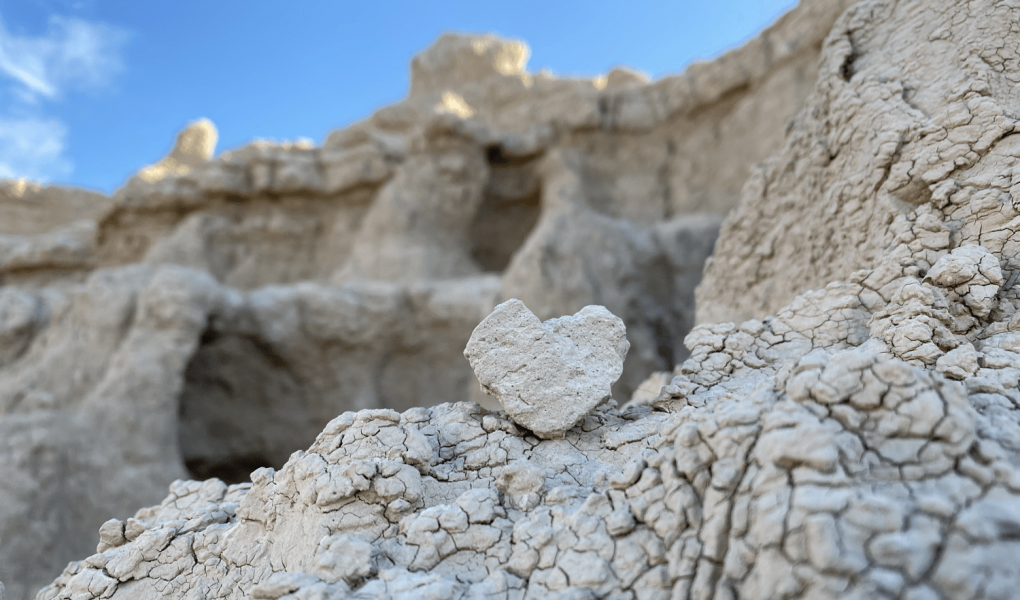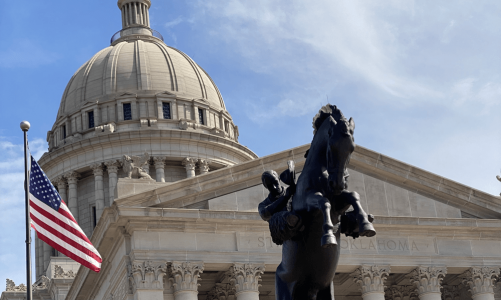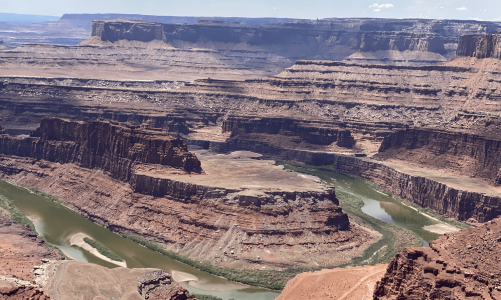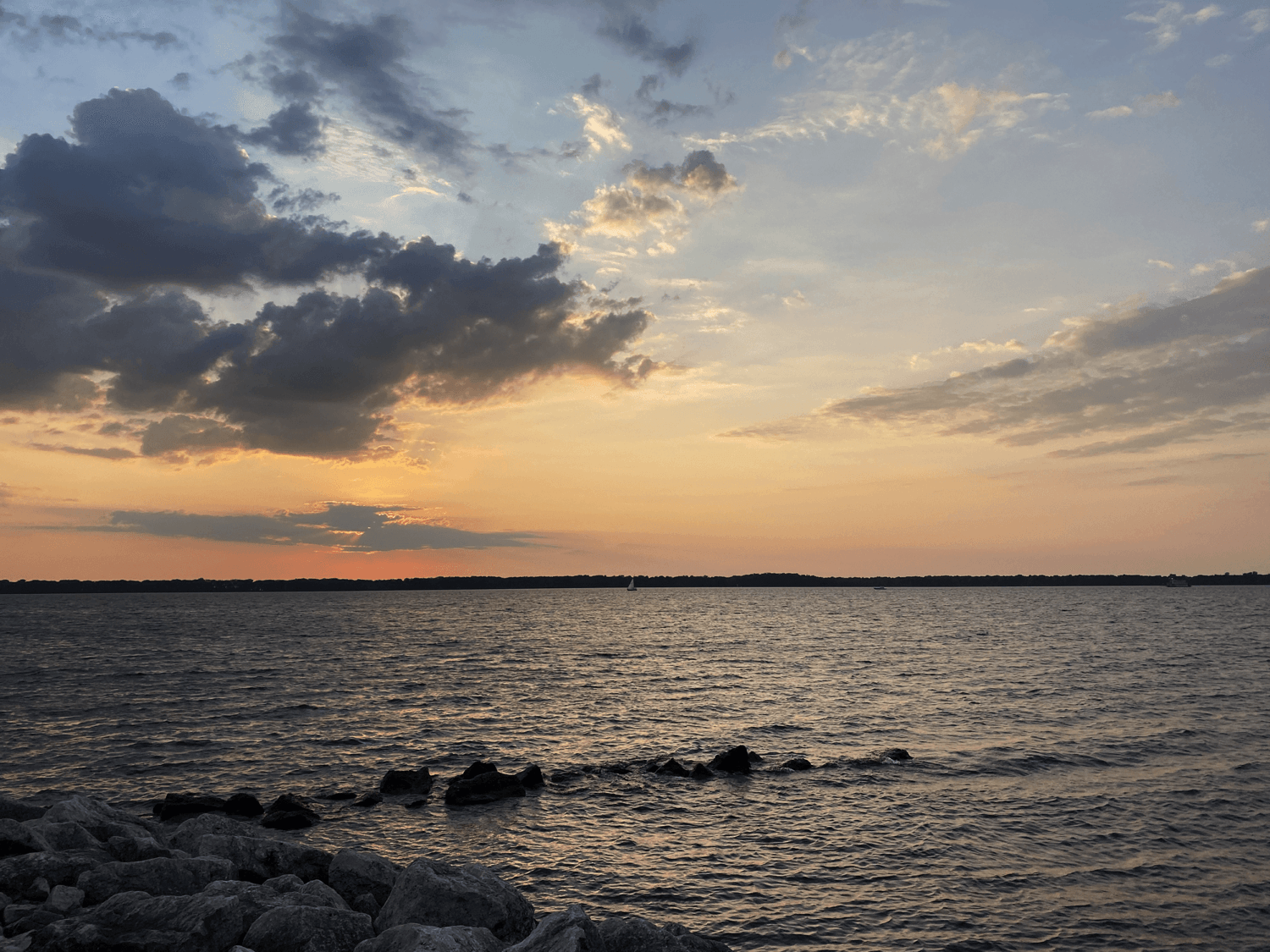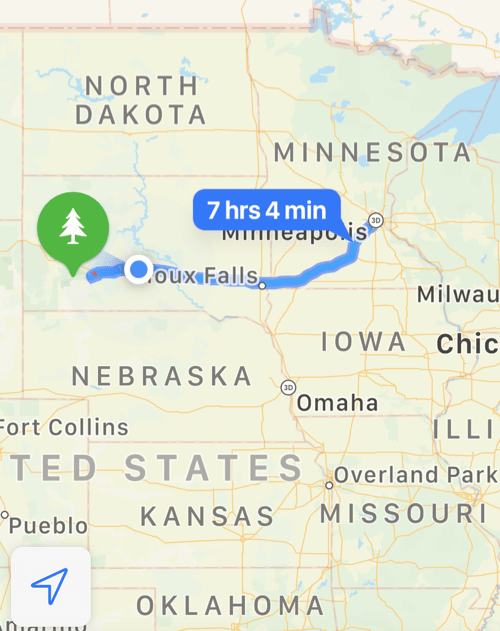
Arrival to the Badlands brought another time change, so we had some extra time to explore the National Park. We walked along the Window trail for a bit. It stayed true to its name, as there were “windows” that you could look through.
From there a sight of sandy peaks below beholds you. What’s interesting about the Badlands mountains is that they are located in the middle of a prairie, and not a desert like most of the other national parks I’ve been to. Grass along mountains was quite a scenery change for me, but it was a really cool one.
The badlands were formed by The White River. 1 million years ago, The badlands were just a flat prairie with a river running through it. The river started eroding the soft stone around it. Then the ice age glaciers came, changing the direction of the river.
Streams moving across the land formed the rock formations further. That’s how we got The Badlands today. But they won’t always stay the way they are now. 1 million years from now, the Badlands rock formations will have completely eroded away.
The next day we went to the visitor center first, and then drove along loop road. We got out at the observation points to look at the landscapes. It was rainy at first so we had to be quick, but by noon the sun was shining bright. The mountains we saw had eroded in all kinds of ways.
Some were striped, others looked as if they were made of columns squished together. A range of colors was also present. Rusty reds, sandy yellows, and creamy whites could all be found. One observation point, Yellow mound, was unique because of how bright the yellow mountains were.
The next stop was a bit different. Instead of an observation peak, there were signs about animals that lived in the badlands millions of years ago. Those animals either adapted, moved, or died. Fun Fact: How long ago any these animals lived can be found from what layer of rock their fossils were found in.
An animal that went extinct was an ammonite. Ammonite fossils are evidence that the badlands were underwater 75 million years ago. They served as food for mosasaurs and other predators, and resembled an octopus/squid.
One animal that moved was the alligator. As South Dakota and other places all over north America started becoming less swampy with climate change, prehistoric alligators were forced to move.
Finally, an animal that had to adapt was the dog. The Hesperycyon is an ancestor of the modern day domestic dog. It first evolved into a wolf, and then finally into man’s best friend.
The last thing we did before leaving The Badlands was visit Robert’s Prairie Dog Town. Don’t be fooled by the name, there is no town there. Robert’s Prairie Dog Town is a big stretch of prairie that has tons of prairie dog burrows. Prairie dogs are very cute rodents native to the grasslands of North America.
We also saw bisons, a whole herd of them! Bisons are America’s national mammal. Did you know that by 1884, there were only 325 bison in the wild. Now, there are 500,000!
The third and final animals were pronghorns. Pronghorns are sometimes confused with antelopes, but they are two different species. Pronghorn are north American mammals, and antelopes are African mammals.
